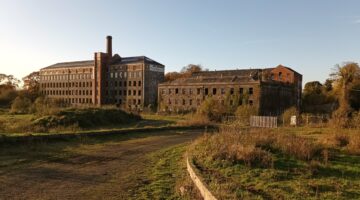The decision by eight DUP and SF Councillors to grant outline planning approval to the Cathedral Quarter/Tribeca proposals for the North Street area of the City may give some short term comfort to whoever is investing in the development, but the level of opposition and absence of anywhere near unanimous Councillor support will not have gone unnoticed. Coupled to the fact that nothing can proceed until the necessary sewage and water supply is constructed, which is years away at best, considerable investor nervousness is bound to be ongoing.
Credit is due to the five Councillors who voted against the approval and illustrated in their questioning that they had thought through the application. It is a sorry reflection on others who clearly had not, and appeared to be simply following a line. The token support from former DUP Finance Minister Simon Hamilton, now Belfast Chamber of Commerce supremo, did nothing to allay widespread fears of the negative long term consequences for the City.
Ulster Architectural Heritage (UAH) primary focus in this case is on cumulative loss and degradation of built heritage assets, which include listed buildings, the Conservation Area and the City’s indigenous character. Heritage is an asset that is essential to the survival of the future sustainability and economy of Belfast and wider Northern Ireland. Inevitably this involves UAH in scrutinising planning policy and its application by Councils.
UAH has repeatedly outlined that this application fails to comply with policy. The proposal introduces degradation of Belfast heritage through substantial demolition of unlisted buildings of character within the Conservation Area. Even with buildings/facades retained, the proposals introduce new massing, of such height, scale and generic design, above and adjacent to the built heritage that the result will be imposing and irrevocable dominance of new development within the setting of listed buildings and the conservation area.
In the meantime, vacancy of historic buildings in the area has risen, and UAH has continued to highlight that it is vital to ensure that built heritage, some of which has already suffered long term vacancy and neglect, is much better maintained, and if possible meanwhile occupied.
This application is founded on many layers of failed master-planning which, despite their multiple approvals, amendments, reiterations, refocusing and extravagant aspirations have delivered precisely nothing. This at the expense of an enormous waste of Departmental and Council resources, staff time and an extended period of further architectural degradation for Belfast. As with all the previous schemes, the CQ/Tribeca has reinvented itself, in this case from being led by a retail anchor tenant, now no longer a possibility, to being residential and grade A office focused. Again, as with previous schemes, the need, viability, affordability and suitability of the scheme as it relates to (now additionally Covid/ post Covid) Belfast specific conditions is unproven, being based on ever changing assumptions and speculation which lack any evidence base.
The supportive Councillors are apparently oblivious to these stark facts and were content to approve the scheme in outline form, with no supporting infrastructure in place or even timetabled, (specifically sewage and water supply capacity), with no regard for the EU EIA directive protecting against cumulative loss of historic assets or any apparent understanding of why Belfast has Conservation Areas, with no regard to the sustainability of the future City and with no guarantee whatsoever that anything will actually be built or that an approval will not simply add value to facilitate another round of investment trading.
In summary, this is not planning. It is gambling on the part of a Council apparently sufficiently mesmerised by unsubstantiated claims & large numbers that they overlook established policy and facts. In planning terms, the Councillors’ decision to approve this application is unsound.
Access the associated planning application ref LA04/2017/2341/O here.
Lands bounded by Royal Avenue, York Street, Church Street, North Street, Rosemary Street, High Street and Donegall Street (former Royal Exchange).


